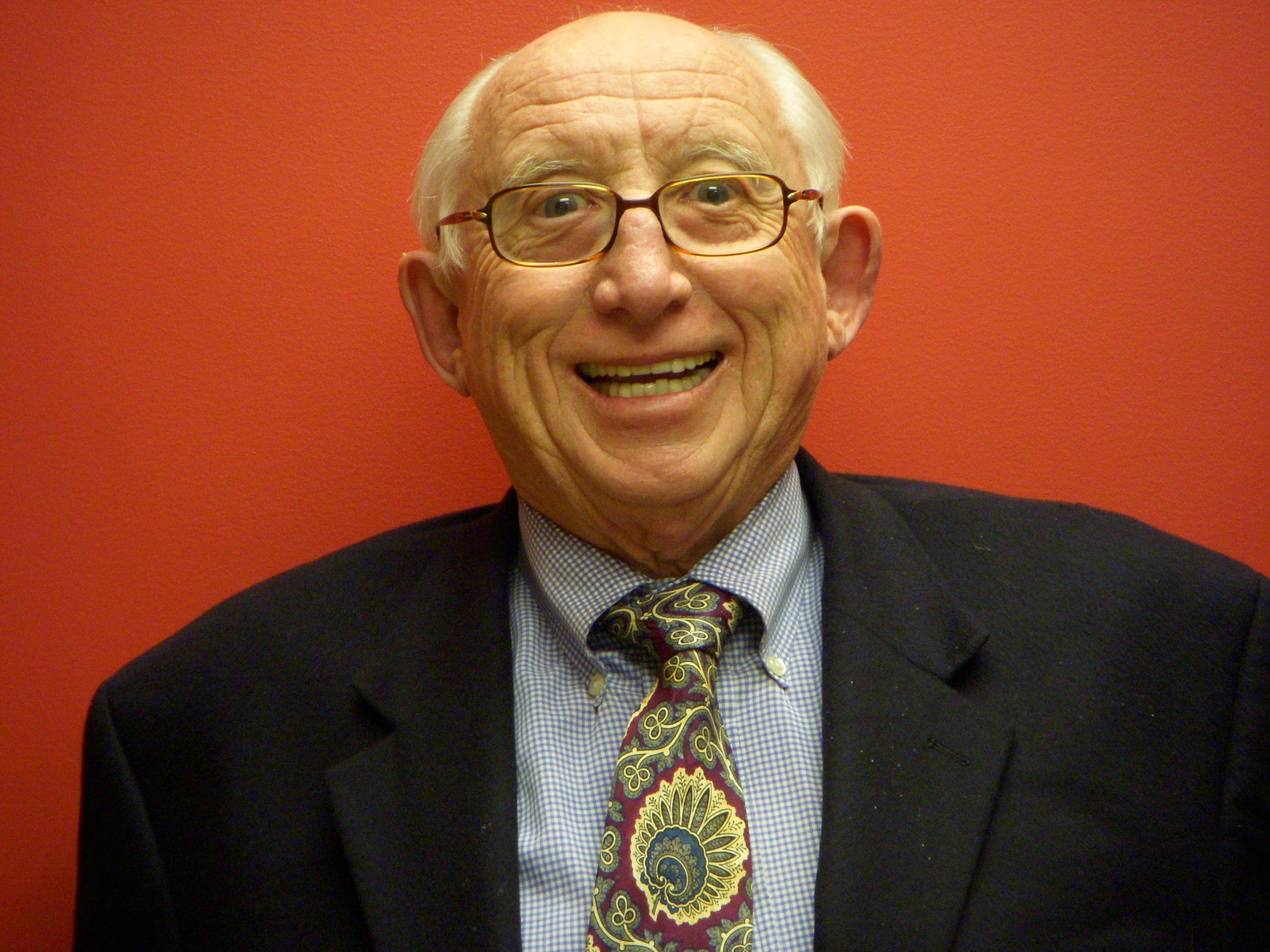A Drug Goes Down in a Perfect Storm

News Analysis With a Sense of Humor


What's in a name? A great deal, if you suffer from one of the most awful long-term diseases that is widespread: chronic fatigue syndrome.
That name infuriates the patients, maybe 1 million in the United States and 17 million worldwide. It also infuriates the small but dedicated cadre of doctors and researchers who have made the disease and its casualties their concern.
The Centers for Disease Control (CDC) in Atlanta picked the CFS moniker in 1988, although the term myalgic encephalomyelitis (M.E.) is still in use in Europe and elsewhere, and is favored by patients.
The new name fast became despised because “it trivializes the disease and misleads people,” in the words of Leonard Jason, professor of psychology at DePaul University in Chicago. Certainly it brings to mind chronic whiners and everyone's everyday fatigue.
Part of the misleading, as Jason and numerous other medical professionals have claimed, is that the name has allowed governments and psychiatrists, especially in Britain, to sweep a plethora of psychological diagnoses into the tent. This, it is alleged, obscures the central unsolved mystery of CFC and its AIDS-like misery. And it hugely diverts government funding away from serious biomedical research. Jason and his colleagues believe that the most promising lines of investigation — pathogens, including a retrovirus called XMRV — are being under-researched in the process.
Although it has been around for centuries, and variously labeled, the modern concern with the disease dates to a major outbreak at London's Royal Free Hospital in 1955. That outbreak was big enough — nearly 300 — to worry public-health officials.
Its appearance in a cluster at the hospital suggested that it was contagious. Then, as now, there was no treatment and no clue as to the path of the contagion: Was it airborne or food-borne? How about contaminated surfaces? Were bodily fluids involved? Was there a genetic link?
None of those questions have been answered. What is known is that the disease appears in clusters and, more often, in isolated cases. It has spread in families, making it frightening; but the spread is occasional, not automatic.
The next major event to get the attention of health professionals was in Nevada at Incline Village, a resort on Lake Tahoe, in 1985. At over 300 cases, it proved too big to ignore, finally attracting attention from the CDC as well as state public-health authorities.
The CDC sent two young epidemiologists to investigate the outbreak—Gary Holmes and Jon Kaplan. They estimated sufferers at perhaps 20,000 throughout the United States, a majority women of whom were women.
In the same year, a second outbreak occurred in Lyndonville, a farming and manufacturing village in the northwest corner of New York state, with 216 cases out of a population of fewer than 900. Lyndonville only had one doctor, David Bell. He has followed the disease's progress tirelessly, becoming somewhat of a Nelson Mandela in the field.
Over the years, the disease kept on popping up around the country, attracting distinguished researchers in its wake. In 1987, Harvard Medical School professor Dr. Anthony Komaroff published a report about increasingly significant numbers in his Boston practice — the first evidence of what is now a quarter century of his CFS research. Dr. Nancy Klimas, an immunologist and AIDS expert at the University of Miami, found her clinic flooded with sufferers from the new disease and soon found their immune systems showed strange characteristics.
The numbers were clearly overflowing the CDC's estimate, but no one yet realized the extent.
Then entered Jason and his team of researchers at DePaul University. They studied the disease in society from a psychological point of view and found in 1990 that there were about 1 million sufferers in the United States.
They also found that the disease was caused by an unknown pathogen but was not psychological in nature, and that the cure rate was extremely low. Additionally, they and other researchers found that one of the prevailing symptoms was immune system suppression.
For most patients, CFS is a one-way ticket to hell. The affliction is acute and mostly incurable. Horrifically, it takes away even life's littlest pleasures.
According to many interviews and hundreds of e-mails I have received since first covering the disease, sufferers are hit first with symptoms of what seems to be flu. Sometimes there is a short, deceptive remission — sometimes two or three. Then the pattern emerges of collapse after every exertion, especially exercise. Finally, it is full onset: There are no more normal days, only different degrees of weakness, pain and other symptoms. Doctors term the disease relapsing and remitting. That means you might have weeks, months or years of slightly better days, and then stretches — often years, sometimes decades — of almost total helplessness. It is goodbye to the life you have known; to work, to hobbies, to lovers and spouses, to everything short of hope.
Deborah Waroff, a gifted New York author and securities analyst, is typical in the devastation of her life. Before Waroff was a skier, a sailor, a passionate squash and tennis player. Now the aloneness of the disease weighs her down. Very old friends — some from her days at Harvard, a few from childhood, a handful from work — sustain her with telephone calls, when she can answer the phone, and some come by. Nonetheless, the brutal loneliness is always there.
Waroff was first felled at the end of July 1989. Her engagement calendar grew full of forlorn cancellations for dinners, parties and meetings. One day in 1991, a bad headache arrived that lasted three days; after that, it came again and again.
Gradually, with help from a caring doctor, Waroff began to find medications and methods that would allow her to work a few hours a day. Pushing herself with sheer willpower to complete a chore would exaggerate her symptoms — more mixed-up speech, stumbles and almost falls, dizziness, rising fevers. Afterward, she would be immobilized for days.
Then things got worse.
In September 2003, Waroff woke up to find that she was too weak to fill out a simple form — just to renew library books – and fax it. That was the beginning of month after month of near-death incapacity. “I was as weak as you can imagine. I lay on the couch, its high back and sides making me think how much this was like being in a coffin, inert, my consciousness flattened by illness. I was too weak to read and often too weak to watch television. I would turn my back to the screen and let the sound wash over me, not taking it in.”
CFS, like AIDS, suppresses the immune system. Typical symptoms include tremendous fatigue that is unrelieved by sleep, as well as flare-ups of herpes- family diseases (like HHV-6 and Epstein-Barr), swelling of the lymph nodes, muscle ache and other pain, dysphasia (the inability to use the right words) and general cognitive failure, nausea and faintness.
Elisabeth Tova Bailey, once a professional gardener in Maine, was felled by CFS. Unable to leave her bed for more than a year, she filled her days by watching a single snail in a terrarium make its fascinating way though life.
When she was feeling somewhat better, Bailey studied the snail through the wonderful work of the 19th-century naturalists — that special breed of romantics who studied by watching, rather than by dissecting in the lab. The result is the well-reviewed and sweet book, “The Sound of a Wild Snail Eating.”
The most famous person to have CFS, and to have managed in great adversity to be productive, is Laura Hillenbrand who has over time written two incontrovertible bestsellers, “Seabiscuit: An American Legend” and “Unbroken: A World War II Story of Survival.”
Hillenbrand's achievement is Herculean. She seldom is able to leave her home in Washington, D.C. In a recent interview, she told the story of how she had to leave her own wedding because she was so sick.
Statistically two-thirds more women are afflicted than men. But I have heard from a lot of men, including a medical doctor and a young man, who was thrown out by his father who accused him of malingering, being lazy and not wanting to work. His plight is terrible, as is the plight of other people who do not have the intellectual capital or financial resources to do anything but suffer in isolation. Insurance companies drop coverage routinely, and many doctors misdiagnose or are influenced by psychiatric arguments.
Recovery, like that of DePaul's Leonard Jason, is rare. If it does not occur within the first two years, it is unlikely to occur at all. Usually only the young and well-supported socially are able to regain a good part of the health they once had.
The beacon of hope in this wasteland of human wreckage is a private institute in Reno, Nev. Affiliated with the University of Nevada, it is called The Whittemore Peterson Institute for Neuro-Immune Disease (WPI). It was founded and funded by Harvey Whittemore and his wife, Annette. Their 33-year-old daughter, Andrea Whittemore Goad, has been a CFS sufferer since she was 11.
The medical establishment has been cool to WPI; and NIH turned down all six research grant applications it made last year. But 1 million very sick Americans are cheering for this frontal attack on CFS, which they prefer to call M.E./CFS in deference to the older, less trivializing name.
While these things are argued, the life in limbo that so many endure is described by Waroff this way: “You know the trouble with this disease? All this time goes by with nothing in it. You don't get a chance to put anything in it. It's just empty time.”
Squabbling Experts, Suffering Patients
As with other investigative science, the search for a cure for chronic fatigue syndrome (CFS) is riddled with controversy, accusations and suspicion. The patient community believes, with seeming unanimity, that the medical institutions have failed them globally – namely America’s Centers for Disease Control (CDC) and the National Institutes of Health (NIH) and Britain’s National Health Service (NHS) They argue that the CDC discredited the disease, following the first big U.S. outbreak by giving it a misleading new name, chronic fatigue syndrome, and then shirking on research.
Among the alleged perfidy, the CDC first under-counted the number of U.S. sufferers at 20,000 and then over-counted them at 4 million. The count is crucial because when it was too low, resources were starved. And once it was set too high, test results became skewed because the CDC was including legions of clinically depressed people and others with psychological ailments, probably none of whom had CFS.
Nowhere is the counting more important than trying to establish whether it is the retrovirus XMRV that is the guilty pathogen in CFS. If the count is wrong and the patient cohort include people who have been misdiagnosed, the studies become a nonsense.
That is partially the case in Britain, where the NHS has been predisposed to treat CFS as a psychological disease and to dismiss studies which find XMRV in patients as contaminated, in particular by mouse DNA, which is present in the air of many laboratories that use mice in tests.
But the privately funded Whittemore Peterson Institute (WPI) in Reno, Nev. claims that they have never used mice and have guarded carefully against this possibility. Among the numerous test methods they used to thwart contamination, they hunted down antibodies to XMRV in patient blood, which cannot possibly have any connection to contamination. As WPI president Annette Whittemore points out, the real lab work includes finding genuine patients and extracting the elusive markers such as XMRV antibodies, making the work conclusive.
A recent article in the distinguished British medical journal, The Lancet, advocated cognitive therapy for CFS, such as improved diet and regular, paced exercise. The Internet lit up with denunciation. The consensus was that this was therapy for people who suffered from depression, not CFS.
The bottom line: This kind of commonsense therapy may help some, says Dr. David Bell, who has had more hands-on experience with CFS patients than any other medical professional, but it is not a cure or a breakthrough. What little is known is that different therapies work temporarily for different people: Deborah Waroff in New York has had some relief with ozone blood therapy; others, like Andrea Whittemore Goad in Reno, with Ampligen, an experimental drug; and still others with various immune-system boosters.
Those and other issues were debated at a NIH-sponsored conference, entitled “State of the Science,” on April 7-8. — Llewellyn King
This article was previously published by RealClearPolitics.

“There have been some medical schools in which somewhere along the assembly line, a faculty member has informed the students, not so much by what he said but by what he did, that there is an intimate relation between curing and caring.”
So remarked Ashley Montague, the British-American anthropologist and humanist.
The millions who suffer from what is termed Chronic Fatigue Syndrome in the United States, and Myalgic Encephalomyelitis in the rest of the world, await day that the medical establishment cares enough about the disease to cure it.
They await that day with an anxiousness that is unimaginable to those who have not been afflicted by the disease.
The two commentaries on CFS/ME that Llewellyn King wrote for the Hearst-New York Times Syndicate (and posted on this Web site) have elicited a terrible cry from the afflicted, including a woman who called herself “an unburied corpse.”
These cries called out for a special edition of “White House Chronicle” on CFS. That edition, featuring Deborah Waroff, a New York author, and Dr. Paul Plotz, a National Institutes of Health clinician scientist, first aired on television Oct. 8, 2010.
“I hope the television special and my syndicated columns push the National Institutes of Health and the Centers for Disease Control, and its political masters, to take action on this life-robbing disease,” said King, executive producer and host of “White House Chronicle.”
Here are some of the viewer responses to the CFS/ME special that we have received so far:
From: Terry
Thank you so much for your broadcast featuring ME/CFS.
I am a Canadian ME/CFS patient who has suffered from this disease for over 12 years. I am involved in research looking to see if there is a connection between the newly discovered XMRV retrovirus and neuropsychiatric disease in my child. The thought is XMRV may have been passed onto my child by me and played a role in expression of her condition.
I am waiting for general XMRV research to learn if the retrovirus played a role in cancer I was diagnosed with four years ago as well. I am wondering if I will develop other cancers and wait anxiously to learn more about ME/CFS and cancer.
I would like to state here, in my experience, CFS/ME is not biologically benign, and highlighting CFS/ME on your show is significant. Perhaps you may help move research forward and thank you in advance for this.
I am immensely appreciative, since as you can imagine, I am anxious for research to help my family understand our poor state of health.
I am a most grateful U.S. neighbor.
From: Melinda
I can’t thank you enough for the attention you have brought to ME/CFS suffers.
I have had to deal many times with the ignorance and intolerance towards this illness. It is such an isolating illness and it is well and truly about time that more attention is given to it.
It would be so much easier to deal with if we had understanding and support.
Again thank you!
From: Cheryl
Thank you so very much for your willingness and openness to bring new light to ME/CFS on your show.
We need you. We are desperate to have our voices heard. I can only tell you from my experience that no one would want to have this horrible, life-stealing illness.
I was a very active social worker and church and community volunteer before contracting a virus in 2004 that never went away. It took so long to get an accurate diagnosis that by the time that I did, I was completely bedbound, not being able to leave my home for weeks at a time.
I have to travel over 1,000 miles for medical care, since I am unable to find a doctor here that believes me.
In January of this year, I had to crawl out of my bed to fight breast cancer. With a compromised immune system, I worry about it coming back and not being strong enough for more treatments.
Cancer was a breeze compared to the battles of ME/CFS–and I do not say that flippantly.
Please continue to bring this horrible illness and the injustices to the public. It is a crime against humanity to be made to suffer like this with no answers.
God bless you, Mr. King.
From: Karen
How is “epidemic” defined at the White House?
When is National XMRV Testing Day?
How much longer do you think I can hold out before Chronic Fatigue Syndrome induced dysautonomia shuts down a vital central nervous system?

I’ve been walking on the sad side. My mailbox is jammed with dozens of heartrending e-mails from sufferers of Chronic Fatigue Syndrome (CFS); a terrible disease that is little understood, little researched and hard to diagnose.
Chronic Fatigue Syndrome, which is known as Myalgic Encephalomyelitis in many parts of the world, mostly strikes people in their thirties and forties. The disease begins with flu-like symptoms which are often a precursor to a full collapse, often after exercise.
The disease largely disables the immune system; and leads to joint and muscle pain, cognitive dissonance, memory loss, dysphasia and problems with simple math. Sufferers are often confined to bed for months, functioning at a substantially reduced capacity, where the simplest tasks become monumental.
CFS-afflicted authors describe taking years to finish projects that should have taken months. These include Hillary Johnson, whose book “Osler’s Web” is about CFS; Laura Hillenbrand, who wrote the bestseller “Sea Biscuit” while struggling with the disease; and Deborah Waroff, who is writing a book about the Jewish hero Sholom Schwartzbard, but who has found the task dragging on for years, working as she can between severe periods of disability, confined to bed.
The human suffering of both the afflicted and those close to them is incalculable in its awful impact. One woman who e-mailed me wrote: “When I became totally disabled seven years ago, because I had not announced my illness previously, nearly everyone I knew figured the illness was in my head. They were aided and abetted with this sort of reasoning based on how the majority of the medical establishment and media had treated CFS. Like many with CFS, I lost all of my companions and my spouse.”
One of the most hopeful of recent discoveries is also generating a collateral fear. The retrovirus XMRV has been found to be present in CFS patients and has led them to worry about transmitting the disease to family members. One woman who e-mailed me from Britain wrote that her husband contracted the disease after years of nursing her. Who, she asked, will look after them now?
A sufferer in Maryland wrote to me that she worries about her family. She and her husband decided to have a child. They were blessed with triplets – and the return of the mother’s disease. Now she worries for her husband and the three babies.
A man—one-third of victims are male, although the National Institutes of Health treats CFS as a woman’s disease–sums up the anger in the community towards the political establishment, and particularly the Centers for Disease Control which changed the name from Myalgic Encephalomyelitis, in a controversial action.
He wrote: “Washington didn’t so much forget – they were never told. The CDC swept it under the carpet, despite the fact that their main raison d’être is to investigate and sort epidemics of new diseases before they take hold. Now, because of the CDC’s wrongdoings, there are more than 1 million people affected in the USA and possibly 17 million worldwide. Most of these people are too sick to stand up for themselves, to fight back.”
Breaking down the e-mails, I find these commonalities:
· Anger at the CDC and, to a lesser extent, the National Institutes of Health and government in general.
· Tremendous suffering and horrendous problems with affording treatment; frequent misdiagnosis, as doctors use a “dustbin” approach that discards all the possibilities until they get to CFS.
· Anger at the media and others for not taking CFS seriously enough.
· The knowledge, with a cure rate of between 4 and 8 percent, that they are awaiting the inevitable in huge discomfort. They are on medical death row.
· Sufferers describing themselves as “living corpses.” Alone with their suffering, many commit suicide.
I’m not a medical writer. Writing about medicine has never interested me. But in a career of writing for newspapers, spanning more than 50 years, I’ve never received so much mail that has so consumed the thought process and torn at the heart.
There is a ghastly disease out there that cries out to be taken seriously, to get proper attention in the medical world, and to be prioritized along with the other big diseases claiming research dollars.